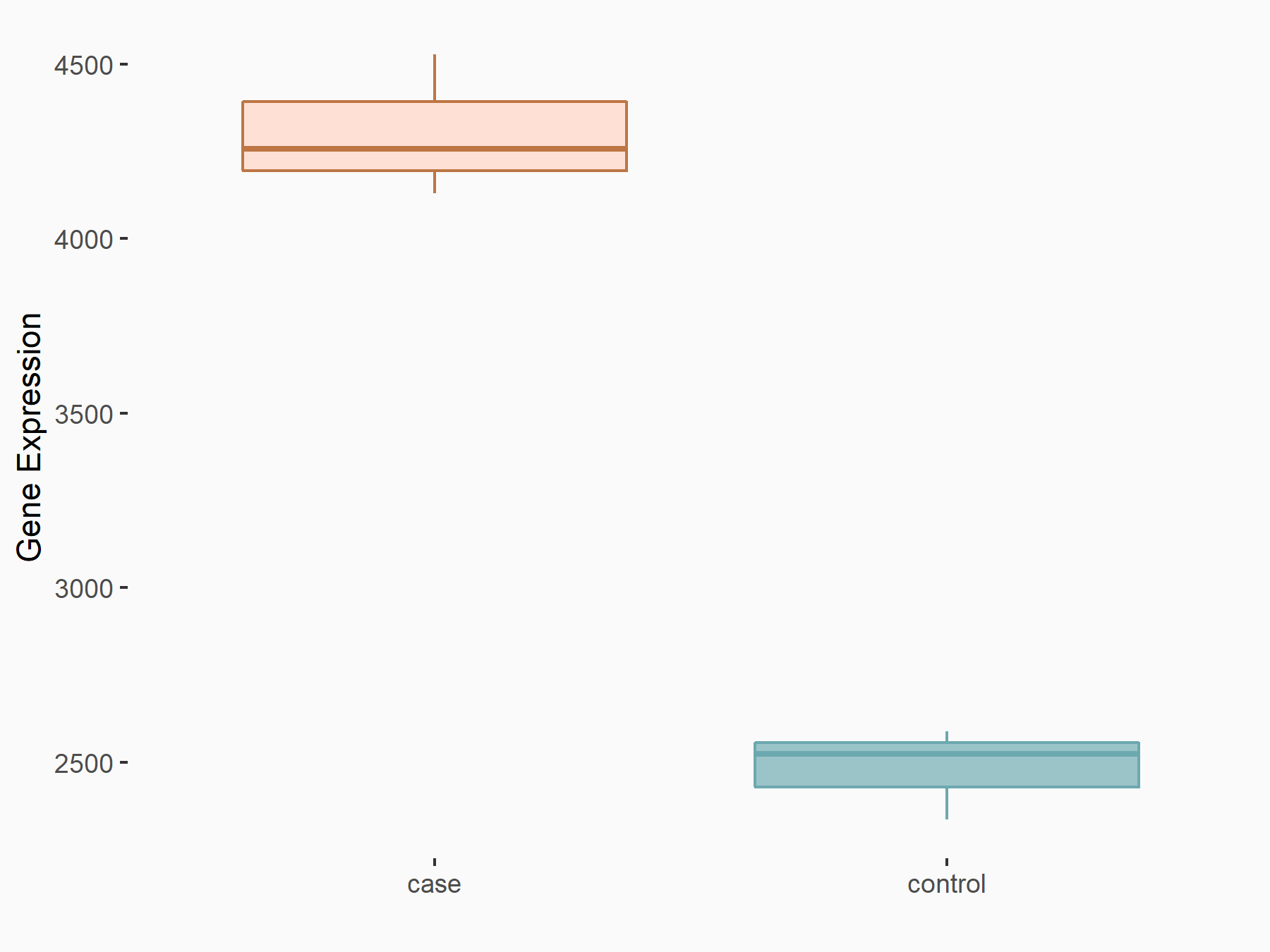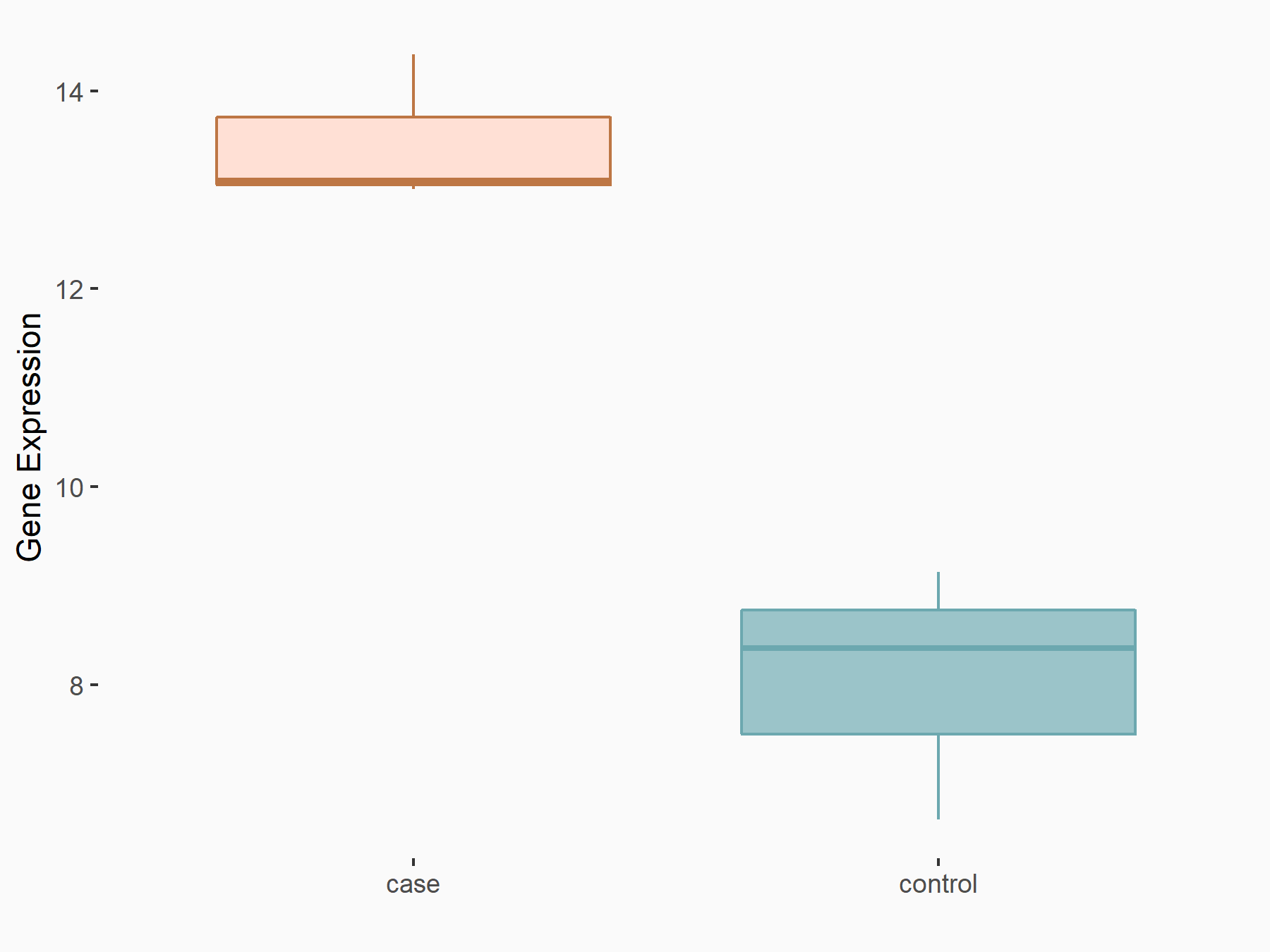m6A Target Gene Information
General Information of the m6A Target Gene (ID: M6ATAR00163)
Full List of m6A Methylation Regulator of This Target Gene and Corresponding Disease/Drug Response(s)
PRKAA1
can be regulated by the following regulator(s), and cause disease/drug response(s). You can browse detail information of regulator(s) or disease/drug response(s).
Browse Regulator
Browse Disease
Methyltransferase-like 3 (METTL3) [WRITER]
| Representative RNA-seq result indicating the expression of this target gene regulated by METTL3 | ||
| Cell Line | Caco-2 cell line | Homo sapiens |
|
Treatment: shMETTL3 Caco-2 cells
Control: shNTC Caco-2 cells
|
GSE167075 | |
| Regulation |
  |
logFC: 7.94E-01 p-value: 1.12E-47 |
| More Results | Click to View More RNA-seq Results | |
| In total 1 item(s) under this regulator | ||||
| Experiment 1 Reporting the m6A Methylation Regulator of This Target Gene | [1] | |||
| Response Summary | m6A driven machinery in virus-induced vascular endothelium damage and highlight the significance of vitamin D3 in the intervention of HCMV-induced atherosclerosis. METTL3 methylates mitochondrial calcium uniporter (MCU), the main contributor to HCMV-induced apoptosis of vascular endothelial cells, at three m6A residues in the 3'-UTR. Vitamin D3 downregulated the METTL3 by inhibiting the activation of AMPK subunit alpha-1 (AMPK/PRKAA1), thereby inhibiting the m6A modification of MCU and cell apoptosis. | |||
| Target Regulation | Down regulation | |||
| Responsed Disease | Atherosclerosis | ICD-11: BD40.Z | ||
| Pathway Response | AMPK signaling pathway | hsa04152 | ||
| Cell Process | Cell apoptosis | |||
| In-vitro Model | hTERT-RPE1 | Normal | Homo sapiens | CVCL_4388 |
| iHAEC | Normal | Homo sapiens | CVCL_C0EQ | |
Wilms tumor 1-associating protein (WTAP) [WRITER]
| Representative RNA-seq result indicating the expression of this target gene regulated by WTAP | ||
| Cell Line | mice hepatocyte | Mus musculus |
|
Treatment: Wtap Hknockout mice hepatocyte
Control: Wtap flox/flox mice hepatocyte
|
GSE168850 | |
| Regulation |
  |
logFC: 6.89E-01 p-value: 3.35E-03 |
| More Results | Click to View More RNA-seq Results | |
| In total 1 item(s) under this regulator | ||||
| Experiment 1 Reporting the m6A Methylation Regulator of This Target Gene | [2] | |||
| Response Summary | WTAP/LKB1/AMPK subunit alpha-1 (AMPK/PRKAA1) axis in hepatocellular carcinoma cells acted as a key regulator, linking m6A with autophagy. WTAP-mediated m6A modification plays an important role in the regulation of autophagy in hepatocellular carcinoma cells, which provides a promising target for the treatment of hepatocellular carcinoma. | |||
| Target Regulation | Up regulation | |||
| Responsed Disease | Hepatocellular carcinoma | ICD-11: 2C12.02 | ||
| Pathway Response | AMPK signaling pathway | hsa04152 | ||
| Autophagy | hsa04140 | |||
| Cell Process | Cell autophagy | |||
| In-vitro Model | BEL-7402 | Endocervical adenocarcinoma | Homo sapiens | CVCL_5492 |
| BEL-7404 | Endocervical adenocarcinoma | Homo sapiens | CVCL_6568 | |
| HEK293T | Normal | Homo sapiens | CVCL_0063 | |
| L-02 | Endocervical adenocarcinoma | Homo sapiens | CVCL_6926 | |
| SMMC-7721 | Endocervical adenocarcinoma | Homo sapiens | CVCL_0534 | |
Liver cancer [ICD-11: 2C12]
| In total 1 item(s) under this disease | ||||
| Experiment 1 Reporting the m6A-centered Disease Response | [2] | |||
| Response Summary | WTAP/LKB1/AMPK subunit alpha-1 (AMPK/PRKAA1) axis in hepatocellular carcinoma cells acted as a key regulator, linking m6A with autophagy. WTAP-mediated m6A modification plays an important role in the regulation of autophagy in hepatocellular carcinoma cells, which provides a promising target for the treatment of hepatocellular carcinoma. | |||
| Responsed Disease | Hepatocellular carcinoma [ICD-11: 2C12.02] | |||
| Target Regulator | Wilms tumor 1-associating protein (WTAP) | WRITER | ||
| Target Regulation | Up regulation | |||
| Pathway Response | AMPK signaling pathway | hsa04152 | ||
| Autophagy | hsa04140 | |||
| Cell Process | Cell autophagy | |||
| In-vitro Model | BEL-7402 | Endocervical adenocarcinoma | Homo sapiens | CVCL_5492 |
| BEL-7404 | Endocervical adenocarcinoma | Homo sapiens | CVCL_6568 | |
| HEK293T | Normal | Homo sapiens | CVCL_0063 | |
| L-02 | Endocervical adenocarcinoma | Homo sapiens | CVCL_6926 | |
| SMMC-7721 | Endocervical adenocarcinoma | Homo sapiens | CVCL_0534 | |
Atherosclerosis [ICD-11: BD40]
| In total 1 item(s) under this disease | ||||
| Experiment 1 Reporting the m6A-centered Disease Response | [1] | |||
| Response Summary | m6A driven machinery in virus-induced vascular endothelium damage and highlight the significance of vitamin D3 in the intervention of HCMV-induced atherosclerosis. METTL3 methylates mitochondrial calcium uniporter (MCU), the main contributor to HCMV-induced apoptosis of vascular endothelial cells, at three m6A residues in the 3'-UTR. Vitamin D3 downregulated the METTL3 by inhibiting the activation of AMPK subunit alpha-1 (AMPK/PRKAA1), thereby inhibiting the m6A modification of MCU and cell apoptosis. | |||
| Responsed Disease | Atherosclerosis [ICD-11: BD40.Z] | |||
| Target Regulator | Methyltransferase-like 3 (METTL3) | WRITER | ||
| Target Regulation | Down regulation | |||
| Pathway Response | AMPK signaling pathway | hsa04152 | ||
| Cell Process | Cell apoptosis | |||
| In-vitro Model | hTERT-RPE1 | Normal | Homo sapiens | CVCL_4388 |
| iHAEC | Normal | Homo sapiens | CVCL_C0EQ | |
References